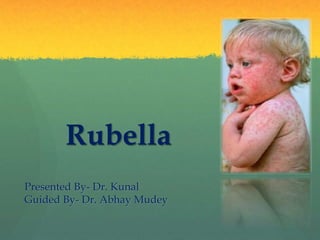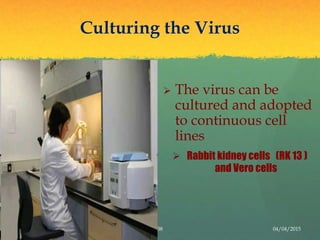Rubella, also known as German measles, is a contagious viral illness caused by the rubella virus. It is most common in children between 5-10 years of age. The virus is transmitted through respiratory droplets. Common symptoms include a rash and tender lymph nodes. If a woman is infected during pregnancy, especially in the first trimester, it can cause congenital rubella syndrome in the fetus, resulting in defects like deafness, heart problems, and intellectual disabilities. Diagnosis involves isolating the virus or detecting antibodies in blood tests. Vaccination is the best way to prevent rubella infection and its complications.












![Rubella Pathogenesis
Respiratory transmission of virus
[Spread by respiratory droplets]
Replication in nasopharynx and
regional lymph nodes
Viremia 5-7 days after exposure
with spread to tissues
Placenta and fetus infected during
viremia
04/04/201513](https://image.slidesharecdn.com/rubella-161231091258/85/Rubella-Seminar-13-320.jpg)














































